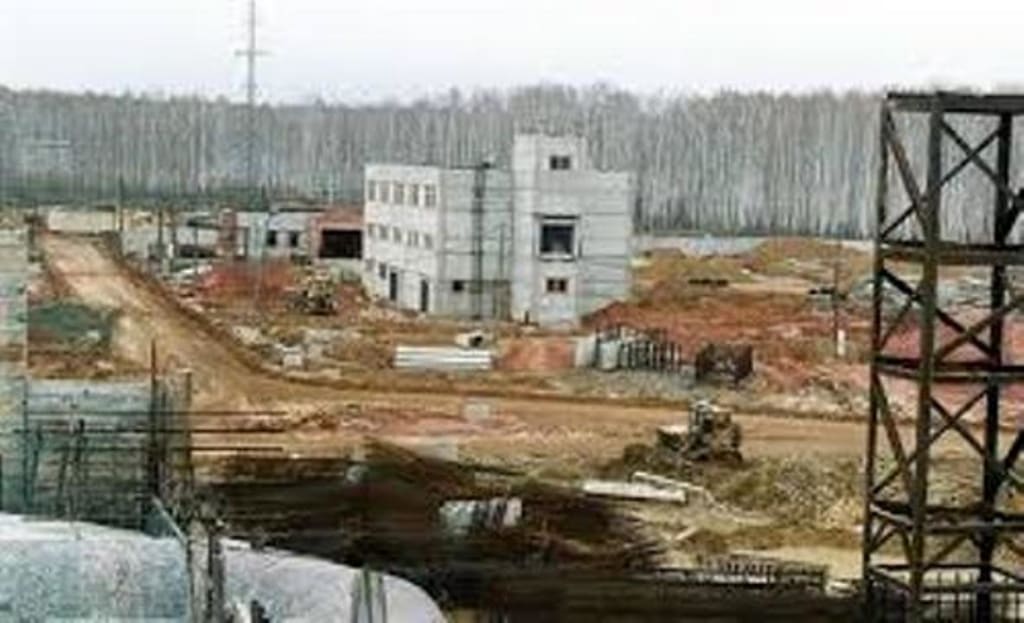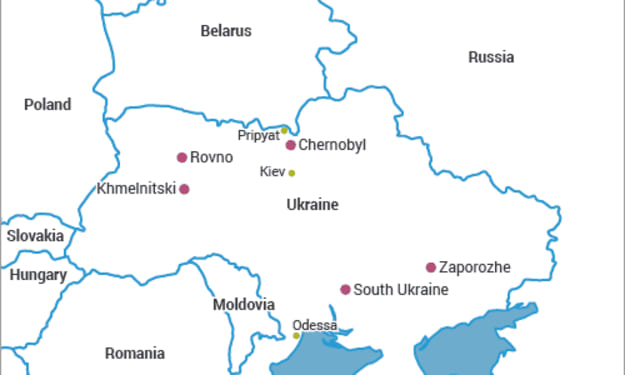Russia’s City 40, graveyard of the Earth
Ozersk, codenamed City 40, was the motherland of the Soviet nuclear munitions program. Now it's one of the world’s most polluted places, but numerous of its residers continue to see it as a paradise, director Samira Goetschel writes.

Ozersk, codenamed City 40, was the motherland of the Soviet nuclear munitions program. Now it's one of the world’s most polluted places, but numerous of its residers continue to see it as a paradise, director Samira Goetschel writes. Deep in the vast timbers of Russia’s Ural Mountains lies the interdicted megacity of Ozersk. Behind guarded gates and acerbic lines, walls stand a beautiful riddle – a narcotic place that seems to live in a different dimension. Codenamed City 40, Ozersk was the motherland of the Soviet nuclear munitions program after the alternate world war. For decades, this megacity of people didn't appear on any charts, and its occupants’ individualities were canceled from the Soviet tale. Moment, with its beautiful lakes, scented flowers, and graphic tree-lined thoroughfares, Ozersk resembles a suburban 1950s American city – like one of those too-perfect places depicted in The Twilight Zone.
On a typical day, youthful maters push babe in buggies and children to play on the road. Music thunderclaps from teenage boys’ stereos as they show off their skateboarding chops to youthful girls. In the near timber, families swim in the lake as aged folk rest on demesne benches, enjoying lazy autumn watching passersby. On the side roads, original women vend fruit and vegetables. Only the Geiger counters used to check the yield before it's bought point to the dark secret that haunts this tranquil civic scene. In 1946, the Soviets began construction of City 40 in total secretiveness, around the huge Mayak nuclear factory on the props of Lake Irtyash. It would house the workers and scientists transported from across the country to lead the Soviet Union’s nuclear munitions program, and make an infinitesimal lemon. For the first eight times, residers were interdicted from leaving the megacity, writing letters, or making any contact with the outside world – including members of their own family. Those who had been dislocated then were considered missing by their cousins, as if they had faded into oblivion.
City 40’s occupants were told they were “ the nuclear guard and rescuers of the world”, and that everyone on the outside was an adversary. While the maturity of the Soviet population was suffering from a shortage and living in menial poverty, the authorities created a paradise for these residers, furnishing them with lives of honor and some luxury. They were offered private apartments, the plenitude of food – including fantastic delectables similar as bananas, condensed milk, and caviar – good seminaries and healthcare, a plethora of entertainment and artistic conditioning, all in a lakeside timber setting good of a Hans Christian Andersen fairytale.
in exchange, the residers were ordered to maintain secrets about their lives and work. It's a deal they still cleave to moment, in a megacity where nearly all of Russia’s reserve fissile material is stored.
It's prestigious to live in Ozersk. Numerous residers describe it as a city of “ intellectualists”, where they're used to getting “ the stylish of everything for free”. Life in an unrestricted city implies not only physical security but fiscal stability for their families; Ozersk children, they assert, are offered great openings for a successful future. But the pact has had deadly consequences. For times, the Soviet Union’s political and scientific leadership withheld the goods of extreme exposure to radiation on the health of the megacity’s occupants and their unborn seed. From the onset, the maturity of residers worked or lived near the Mayak nuclear complex under extremely dangerous conditions. From the late 1940s, people then started to get sick and die the victims of long-term exposure to radiation.
While accurate data isn't available thanks to the authorities’ extreme secretiveness and frequent denials, the headstones of numerous youthful residers in Ozersk’s cemetery bear substantiation to the secret the Soviets tried to bury alongside victims of the Mayak factory.
One near the lake has been so heavily defiled that locals have renamed it the lake of Death'
City 40 residers have been casualties in a number of nuclear incidents, including the 1957 Kyshtym disaster – the world’s worst nuclear accident previous to Chernobyl – which the Soviet authorities kept a well-guarded secret from the outside world.
The Mayak factory’s operation has also overseen the jilting of its waste into near lakes and gutters, which flow into the . River Ob and on into the Arctic Ocean. Over four decades, Mayak is said to have ditched 200 million curies of radioactive waste into the terrain, equal to four “ Chernobyls”, although this is always denied by the authorities.
According to some Ozersk residers, the jilting continues moment. One of the near lakes has been so heavily defiled by plutonium that locals have renamed it the “ Lake of Death” or “ Plutonium Lake”. The radioactive attention there's reported to exceed 120 million curies –2.5 times the quantum of radiation released in Chernobyl.
In a vill, about 20 twinkles outside Ozersk, a digital timepiece in the city square switches constantly between the original time and the current position of radiation in the air (though the ultimate reading is noway accurate). Half a million people in Ozersk and its girding area are said to have been exposed to five times as important radiation as those living in the areas of Ukraine affected by the Chernobyl nuclear accident. On the outskirts of Ozersk, there's a large “ no trespassing” sign in English and Russian, with “ Attention!!!” written in large red letters to emphasize the point. Nonnatives and non-resident Russians are still banned from entering the megacity without authorization from the FSB (Russian secret police), and rephotographing in the area is rigorously interdicted.
Ozersk’s residers are, still, permitted to exit the megacity with a special pass, and are indeed allowed to leave permanently if they wish noway to return. Many do because it would mean losing the boons of being an occupant of this unrestricted megacity. In utmost – though clearly not all – residers’ eyes, the hedge around Ozersk doesn't serve to keep them in against their wishes, but rather to keep outlanders down from their paradise, guarding them against “ the adversary”. The acerbic-line hedge remains a natural part of the megacity’s geography and the citizens’ cerebral makeup and collaborative identity.
It's delicate for outlanders to comprehend how the residers of City 40 can continue to live in a place they know is sluggishly killing them. But an original intelligencer says they aren't concerned with what the outside world thinks of them and their way of life.
He says the maturity of his fellow residers, like him, just wish to be left alone to live in “ peace”. They're happy in their fended-in paradise.
About the Creator
Amit Kumar
Hello Guys how are you. I hope you guys are doing well. I am a bloger. I write blogs related to earning money and related to health. Apart from this, I also write blogs on animals.
Enjoyed the story? Support the Creator.
Subscribe for free to receive all their stories in your feed. You could also pledge your support or give them a one-off tip, letting them know you appreciate their work.






Comments
There are no comments for this story
Be the first to respond and start the conversation.